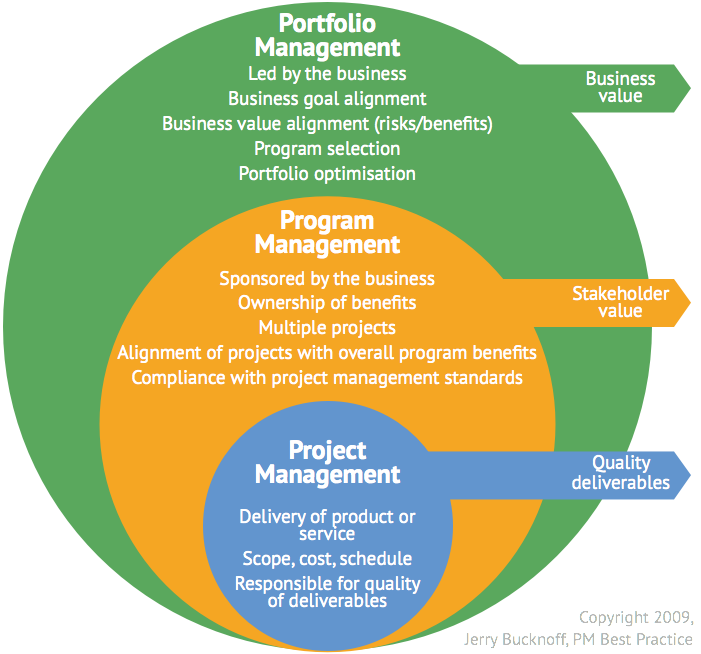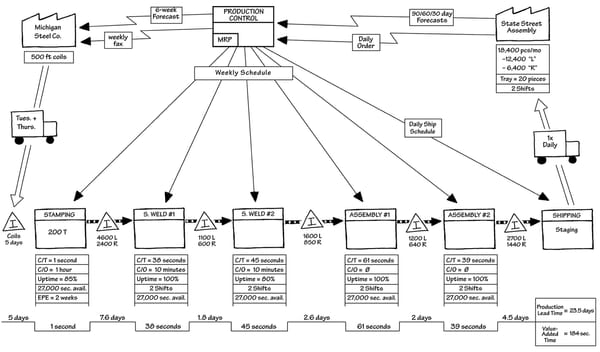Introduction
In the field of project management, the terms projects, programs, and portfolios are crucial but sometimes misunderstood. These aren't just fancy words; they represent different levels of planning and action in an organisation. There is a need to distinguish these terms for effective management, and this blog aims to explain each term clearly, providing insights into their unique roles in achieving organisational success.
The Essence of Projects
At its core, a project is a temporary task with a clear goal, such as creating something unique like a product, service, or result. It's like a fundamental building block for executing plans, marked by specific objectives, a set timeline, and allocated resources. Projects are the essential components of strategic initiatives, each with a definite start and end, clear goals, and a planned budget.
Projects can be big or small, like constructing a new office, making software, or running a marketing campaign. What connects them is their main aim: achieving a specific result or change. For instance, replacing all the lights in a building with energy-efficient ones is a project with clear goals to help the environment and save money.
The success of a project is determined by its ability to achieve its goals while staying within the limits of time, budget, and quality. Effective project management methods like Agile, Waterfall, or Lean are essential for guiding these efforts to a successful finish. These methods provide the structure for planning, executing, and wrapping up projects, ensuring that they deliver value and meet their intended objectives.
Read more about Agile HERE and Kanban (a form of Agile) HERE
Diving into Programs
A project is all about achieving specific results, while a program involves a group of related projects managed together to gain advantages that can't be obtained by handling them separately. Programs have a strategic purpose, aiming to fulfil broader organisational objectives that align with the company's vision and overall direction.
A program manager oversees the coordination of projects and operational activities, ensuring alignment with the program's objectives. This role involves managing dependencies between projects, resolving conflicts, and making strategic decisions to guide the program toward its goals. For example, a program aimed at enhancing an organisation's market share might include projects related to product development, marketing strategies, and customer engagement initiatives.
Programs are flexible and can adapt to changes in organisational strategy or external factors. They need continuous oversight to make sure that the combined outcome of projects and actions aligns with the envisioned strategic benefits. A program's success isn't just about finishing projects but achieving strategic goals and delivering extra value to the organisation.
Exploring Portfolios
A portfolio is the highest level of organising projects in an organisation, including all projects and programs that align with its strategic goals. While projects and programs focus on specific results, portfolios take a broader perspective, concentrating on the organisation's overall strategic direction and the health of its investments in projects and programs.
Portfolio management involves choosing, prioritising, and overseeing a group of projects and programs to make sure they fit with the organisation's main goals and provide the most value. This process includes evaluating possible investments, assigning resources, and tracking progress to make informed decisions about whether to continue, adjust, or end projects and programs.
Portfolios are not fixed; they change as per the organisation's strategic goals and the external environment. Effective portfolio management ensures that an organisation's projects and programs align with its mission, vision, and strategic objectives. It optimises resource allocation and maximises the overall value delivered.
Key Differences and Interconnections
Understanding the differences between projects, programs, and portfolios is crucial for effective strategic execution. Projects are focused on delivering specific outcomes, programs on achieving strategic benefits through coordinated efforts, and portfolios on aligning all projects and programs with the organisation's strategic objectives.
These concepts are related, as projects are a part of programs, and programs are managed within portfolios. This arrangement ensures that activities at all levels contribute to the organisation's main goals, supporting strategic alignment and efficient resource use.
Conclusion
For project managers and organisational leaders dealing with strategic execution, it's vital to distinguish between projects, programs, and portfolios. With a clear grasp of these concepts, they can organise their efforts strategically, use resources more efficiently, and guide their organisations toward successful outcomes.
In project management, understanding the differences between projects, programs, and portfolios helps professionals to improve their strategic planning, execution, and overall effectiveness. Recognising the unique characteristics of each initiative and aligning them with organisational goals is crucial for achieving strategic success and operational excellence.
Further Reading









